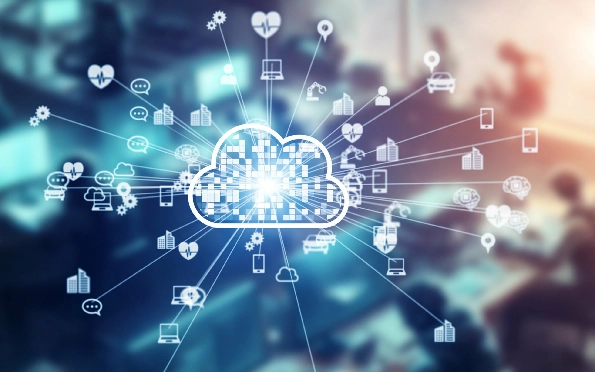This site uses cookies. By continuing to browse the site you are agreeing to our use of cookies.Read our privacy policy>![]()
This site uses cookies. By continuing to browse the site you are agreeing to our use of cookies.Read our privacy policy>![]()
Dynamic Updates on Precision Data Center Air Conditioning, UPS Power Supplies, and Temperature/Humidity Control Products
Precision air conditioning units, UPS power supplies, and other data center equipment
Maintenance and Servicing of Data Center Air Conditioning and Precision Air Conditioning Systems

Smart education solutions are reshaping teaching processes, optimizing resource allocation, and innovating educational models through cutting-edge technologies such as artificial intelligence, big data, and cloud computing. This drives the comprehensive transformation of the education system towards personalization, efficiency, and intelligence.
1. Core Objectives
Personalized Learning: Achieve personalized education at scale, creating unique learning paths for each student.
Teaching Efficiency: Reduce teachers' repetitive tasks and enhance classroom teaching quality and efficiency.
Scientific Decision-Making: Enable precise and intelligent educational management and services based on data-driven insights.
2. Transformation Path
From "Standardized Teaching" to "Personalized Cultivation"
From "Experience-Driven" to "Data-Driven"
From "Knowledge Imparting" to "Competency Development"
1. Smart Classroom Teaching
Intelligent Lesson Preparation Systems: AI-assisted courseware generation and teaching activity design, improving preparation efficiency by over 60%.
Classroom Interaction Analysis: Real-time analysis of student focus and participation via AI vision technology, providing teachers with instructional adjustment suggestions.
Smart Pen Applications: Collect student writing data in real-time, provide immediate feedback on learning status, enabling precise monitoring of the teaching process.
2. Personalized Learning
Adaptive Learning Platforms: Dynamically recommend learning content based on student knowledge graphs, realizing "thousands of faces, thousands of paths" learning.
AI Subject Training: Simulate real-world work scenarios for immersive practical experiences, e.g., ancient book digital restoration simulation systems.
Intelligent Homework Systems: Automate grading, intelligently recommend missed questions, and generate personalized consolidation exercises.
3. Educational Management & Governance
Regional Education Brain: Integrate regional educational resources to enable data-driven decision-making and resource allocation.
Campus Safety Early Warning: Utilize IoT and AI video analysis for intelligent identification and early warning of campus safety incidents.
Teaching Quality Monitoring: Multi-dimensional evaluation of teaching effectiveness, providing data support for educational quality improvement.
1. Educational Digital Intelligence Base
Architectural Features: Compatible with existing systems, supports smooth upgrades, provides unified data standards and interfaces.
Core Functions:
Data Middle Platform: Integrates data from all educational scenarios, forming a unified data asset.
AI Capability Platform: Provides AI services like natural language processing and knowledge graphs.
Application Marketplace: Supports rapid deployment and iteration of educational teaching applications.
2. Intelligent Teaching Tools
Virtual Teaching Assistant: Supports full-process services including intelligent Q&A, homework tutoring, and learning reminders.
AI Course Generation: Automatically generates structured course content and teaching resources based on subject standards.
Multimodal Assessment: Integrates multimodal data (voice, image, text) for comprehensive quality evaluation.
1. Enhanced Teaching Outcomes
Practice in Qingdao Laoshan District shows: Smart Classrooms improve teaching efficiency by 40% and increase student participation by 35%.
iFLYTEK AI Training System: Shortens complex skill training cycles from 3 years to 6 months.
2. Promotion of Educational Equity
Cloud-based resource sharing allows rural schools access to high-quality educational resources.
Intelligent tutoring systems provide high-quality teaching services for resource-underdeveloped areas.
3. Teacher Professional Development
Practice at Tianjin Normal University indicates: Intelligent teaching-research platforms help improve teachers' professional capabilities by 50%.
AI teaching analysis provides teachers with precise instructional improvement suggestions.
1. Top-Level Design First
Formulate specialized plans for educational digital transformation.
Establish multi-departmental collaborative promotion mechanisms.
Set up dedicated funding guarantees.
2. Infrastructure Upgrade
Build high-speed education dedicated networks.
Deploy intelligent educational terminals.
Construct education cloud platforms.
3. Teacher Capacity Building
Conduct tiered and categorized digital training.
Establish teacher digital literacy certification systems.
Cultivate new human-machine collaborative teaching models.
4. Data Governance Empowerment
Establish educational data standard systems.
Build student digital profiles.
Achieve precise governance based on data.
1. Deep Technology Integration
Deeper application of Generative AI in education.
Virtual and Augmented Reality technologies will create immersive learning experiences.
New technologies like brain-computer interfaces may bring revolutionary changes to teaching methods.
2. Ecosystem Restructuring
Education services will shift from "standardized" to "personalized."
Learning spaces will extend from "physical classrooms" to "virtual-physical fusion."
Educational evaluation will transition from "single scores" to "multi-dimensional competencies."
3. Innovative Governance Models
Establish a trusted education evaluation system based on blockchain.
Utilize big data to predict educational development trends.
Form a new education ecosystem with collaborative innovation among government, schools, and enterprises.
Smart education solutions are redefining the future of education. Successful digital transformation is not merely a technological upgrade but a comprehensive change in educational philosophy, teaching models, and management mechanisms. The key lies in building a new educational ecosystem that is student-centered, data-driven, and human-machine collaborative, ensuring every child has access to equitable and quality education.
Not search wanted products
We will contact you as soon as possible after submission.